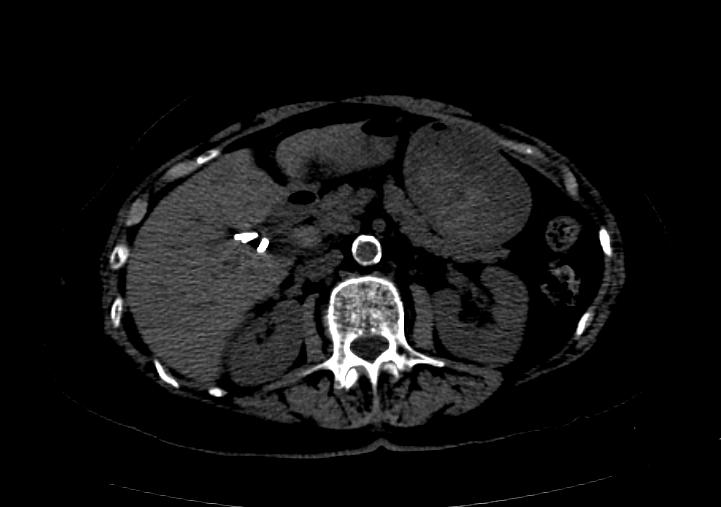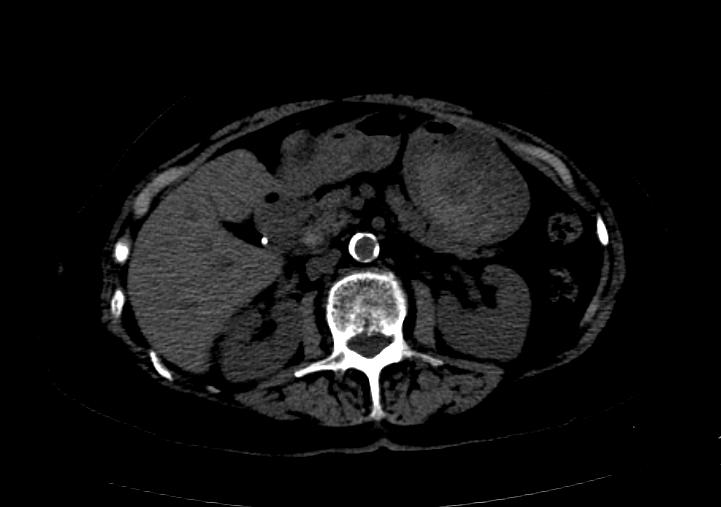Haemobilia
 From Wikidoc - Reading time: 3 min
From Wikidoc - Reading time: 3 min
|
WikiDoc Resources for Haemobilia |
|
Articles |
|---|
|
Most recent articles on Haemobilia |
|
Media |
|
Evidence Based Medicine |
|
Clinical Trials |
|
Ongoing Trials on Haemobilia at Clinical Trials.gov Clinical Trials on Haemobilia at Google
|
|
Guidelines / Policies / Govt |
|
US National Guidelines Clearinghouse on Haemobilia
|
|
Books |
|
News |
|
Commentary |
|
Definitions |
|
Patient Resources / Community |
|
Patient resources on Haemobilia Discussion groups on Haemobilia Patient Handouts on Haemobilia Directions to Hospitals Treating Haemobilia Risk calculators and risk factors for Haemobilia
|
|
Healthcare Provider Resources |
|
Causes & Risk Factors for Haemobilia |
|
Continuing Medical Education (CME) |
|
International |
|
|
|
Business |
|
Experimental / Informatics |
Editor-In-Chief: C. Michael Gibson, M.S., M.D. [1]
Overview[edit | edit source]
| Alternative names |
|---|
| Haemobilia
Haemorrhage in bile
|
Implies bleeding into biliary tree. Can present as acute upper gastrointestinal(UGI) bleeding. It should be considered in upper abdominal pain presenting with UGI bleeding especially when there is a history of liver injury or instrumentation.
- First recorded in 1654 by Francis Glisson, a Cambridge professor[1].
- Haemobilia occurs when there is a fistula between a vessel of the splanchnic circulation and the intrahepatic or extrahepatic biliary system.
Causes[edit | edit source]
- Trauma, accidental or iatrogenic e.g. due to procedures like cholecystectomy
- Instrumentation e.g. after ERCP
- Gallstone
- Inflammatory conditions ranging from ascariasis to PAN
- Vascular malformation
- Tumor
- Coagulopathy
Clinical feature[edit | edit source]
Triad of upper abdominal pain, upper gastrointestinal haemorrhage and jaundice[2] is classical but only present in 22% cases[3].
It can be immediately life threatening in major bleeding. However in minor haemobilia patient is haemodynamically stable despite significant blood loss being apparent [3].
Diagnosis[edit | edit source]
Combination of OGD, CT scan and angiography depending on clinical situation, bearing in mind that haemobilia may present many days after injury. Cholengiography is performed if there is a percutaneous access or if ERCP is undertaken.
The imaging findings are
- Ultrasound: echogenic material in bile ducts.
- Unenhanced CT: High-attenuation clot within the bile ducts.
High density material in the common bile duct is consistent with hemobilia is the patient who is recently s/p cholecystectomy.
Management[edit | edit source]
Most bleeding from instrumentation are minor and would settle spontaneously.
When indicated, management is directed towards stopping bleeding and relieving obstruction if present, which is achieved either by surgical ligation of hepatic artery or by endoscopic embolisation. Endoscopic trans-arterial embolisation (TAE) is preferred initially because of high success rate and less complication. TAE involves the selective catheterization of a hepatic artery followed by embolic occlusion. Surgery is indicated when TAE has failed or sepsis present in biliary tree or drainage has failed.
References[edit | edit source]
- ↑ Francis Glisson,. From Anatomia hepatis (the Anatomy of the liver), 1654 (Cambridge Wellcome texts and documents). Cambridge: Wellcome Unit for the History of Medicine. ISBN 0-9516693-3-8. OCLC 33046433.
- ↑ Quincke, H. (1871). "Ein Fall von Aneurysma der Leberarterie". Berl Klin Wochenschr. 30: 349--352.
- ↑ 3.0 3.1 Green M, Duell R, Johnson C, Jamieson N (2001). "Haemobilia". The British journal of surgery. 88 (6): 773–86. PMID 11412246.
 KSF
KSF
